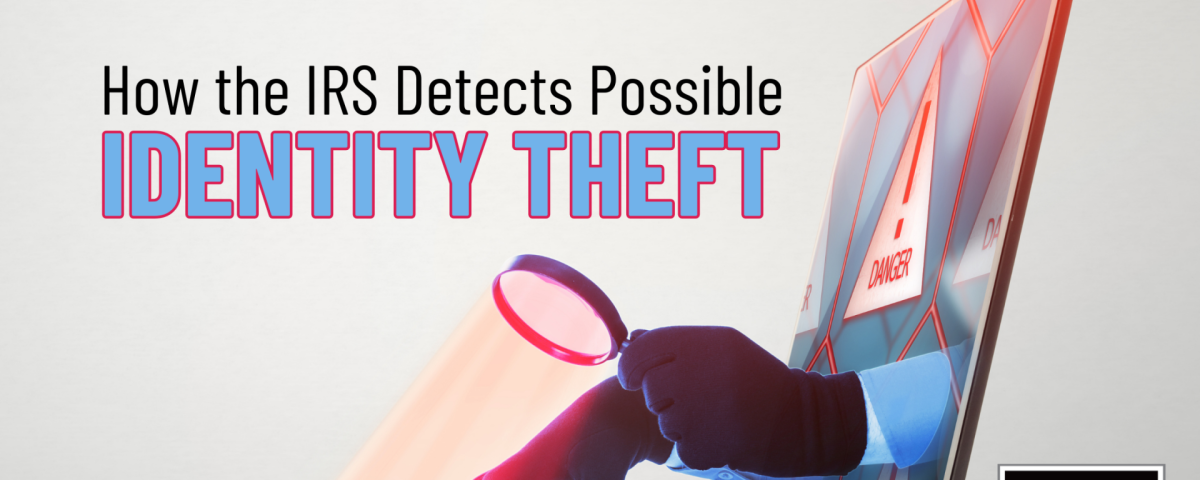- PHONE: 706.288.2000
- FAX : 706.288.2001
How the IRS Detects Possible Identity Theft

State Tax Nexus and Remote Work
August 17, 2023
5 Strategies to Survive a Cash Flow Crisis
November 1, 2023How the IRS detects possible identity theft has changed in recent years. With the increasing prevalence of identity theft and tax fraud, the Internal Revenue Service (IRS) has stepped up its efforts to protect taxpayers and their sensitive financial information. One crucial aspect of this mission is the identification and prevention of identity theft.
Red Flags and Suspicious Activity
The IRS employs a range of tools and techniques to identify potential identity theft. These red flags often arise when there is unusual or suspicious activity associated with a taxpayer’s account. Some common indicators include:
a. Multiple tax returns filed using the same Social Security number.
b. Inconsistent income reported by an employer and on a tax return.
c. A sudden and significant change in reported income or deductions.
d. Suspicious patterns of filing, such as unusual deductions or credits.
e. Multiple direct deposits to different bank accounts.
f. Frequent changes to contact information or mailing addresses.
g. Use of invalid or mismatched Social Security numbers or other taxpayer identification numbers.
Advanced Data Analytics
To detect these red flags effectively, the IRS employs advanced data analytics and modeling. The agency uses cutting-edge technology to analyze vast amounts of taxpayer data, including income records, W-2 and 1099 forms, and even social media information. By examining these sources, the IRS can identify discrepancies and unusual patterns that may signal identity theft or fraudulent activities.
Identity Theft Indicators
When a taxpayer’s account raises identity theft concerns, the IRS may flag it for further investigation. Some common identity theft indicators include:
a. Inability to verify the taxpayer’s identity.
b. Numerous errors or discrepancies on a tax return.
c. Refund claims for excessive amounts.
d. Failure to respond to IRS notices or requests for verification.
e. Previous history of identity theft or fraud.
Protecting Taxpayers
It’s important to note that not all flagged accounts indicate identity theft; innocent taxpayers can sometimes trigger these alerts due to legitimate changes in their financial situations. However, the IRS takes precautions to ensure that the rights and privacy of taxpayers are protected during investigations. Taxpayers with flagged accounts are typically contacted by the IRS and given the opportunity to verify their identity and provide additional information.
Reporting Suspicious Activity
Taxpayers are encouraged to report any suspicious activity to the IRS. If you believe your identity may have been stolen, or if you suspect fraudulent activity on your account, you should contact the IRS immediately. Prompt reporting can help the IRS take action to prevent further damage and protect your financial interests.
The IRS plays a crucial role in this by actively identifying and preventing identity theft and tax fraud. While the process may seem intrusive at times, it is a necessary step to maintain the integrity of the tax system and ensure your hard-earned money remains secure from fraudulent activities.
As tax professionals, we advise all taxpayers to stay vigilant, be proactive in monitoring their financial accounts, and report any suspicious activity promptly. Together, we can work with the IRS to protect your financial interests and uphold the integrity of the tax system. If you have any concerns about tax-related identity theft or need assistance with your taxes, don’t hesitate to reach out to us at Anderson, Adkins & Company in the Augusta, Georgia area for expert guidance and support. Your financial security is our top priority.




